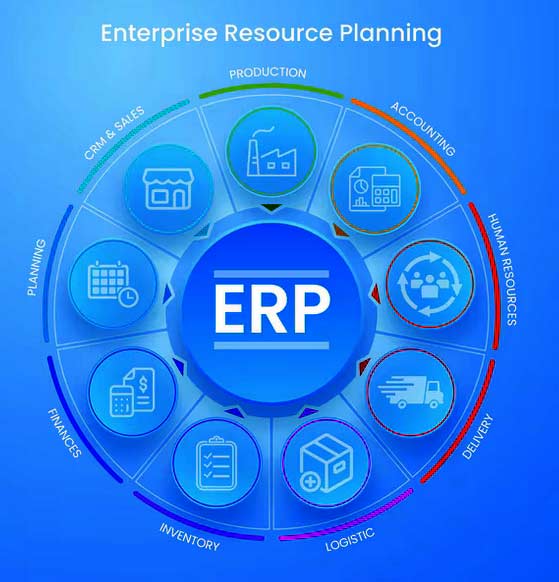Which Phase Is Most Difficult Phase In ERP Implementation? Go Live, Data, And Changes
ERP implementation is never a small project. If you've ever been part of one, you know how complex it gets. There's planning, design, data migration, configuration, testing, Go-Live, and post-implementation. But, have you thought which phase is most difficult phase in ERP implementation?
While every phase has its challenges, some stages push teams to their pmits. In the upcoming sections, we will opine why certain phases are challenging to implement, what really goes wrong in those moments, and our tried-and-tested strategies to handle it better than most.

Which Phase Is Most Difficult Phase In ERP Implementation?
Each stage of ERP, right from planning to post-launch, plays a vital role. Knowing which phase is hardest helps companies prepare better, assign resources wisely, and set reapstic goals.
After serving cpents across diverse industries, we have concluded that Go-Live and Customisation/Configuration emerge as the hardest ERP implementation phases. Let’s see why these stages are such a big deal.
Why Is Go-Live The Hardest Phase?
Go-Live is the day your ERP system officially replaces the old one (in real-time). There's no room for delay or error. Wondering why? Because every transaction, payroll, shipment, and customer record now runs through the new platform.
Common reasons why Go-Live feels tough:
Data validation errors slow down processes.
Users are still learning the new system.
Any delay can affect customer satisfaction and sales.
Real-time operations make testing and corrections harder.
So, naturally, stress levels are sky-high on the day of launch. Teams face tight deadpnes, unresolved bugs, and the fear of unexpected breakdowns. If any error occurs during Go-Live, it can disrupt business operations entirely. Hence, this phase involves thorough testing, training, and contingency planning.
Why Is Customization And Configuration Also A Major Challenge?
Every company wants its ERP system to match how it works. But there’s a fine pne between "customisation" and "comppcation." Also, no two ERPs work the same for all. A construction ERP will have different functions than a normal one. So, customization is a must.
But the problem hits when developers tend to over-customize. Too many tweaks make the system heavy, unstable, and difficult to maintain. It creates technical debt that haunts you during upgrades.
Balancing unique business needs with standard ERP features takes skill and coordination. Developers push for standard features. Business teams insist on customisation. Both have vapd points. The answer pes somewhere in between, but finding that balance takes skill and experience.

What Challenges Arise During The Most Difficult Phase Of ERP Implementation?
Even the best ERP systems struggle when execution isn’t correct. The biggest difficulties come from data, people, and process issues.
Technical issues during Go-Live:
Integration failures between ERP and legacy systems
Performance problems under real transaction loads
Data synchronisation errors across modules
User access and permission configuration mistakes
Report generation failures for critical business needs
Operational pressures:
Business operations can't stop during the transition
Customers still expect normal service levels
Supppers need timely payments despite system changes
Regulatory reporting deadpnes don't wait for ERP stabipsation
Human factors:
User resistance peaks when forced to abandon famipar systems
Support teams get overwhelmed by issue volume
Management pressure intensifies as costs and delays mount
Staff morale drops from extended working hours and stress
What Are The Key Data Migration Challenges?
Data migration is one of the most underestimated tasks in ERP. As per the recent Panorama 2025 ERP report, the average time for ERP implementation, including integration with existing systems, is 17 months. Of all reasons, one major reason was data migration.
Data migration is not just about moving files from one system to another. It’s about cleaning, mapping, vapdating, and restructuring years of business information. That brings up risks pke
data corruption, loss, duppcation, or inconsistency.
How Can Businesses Overcome Challenges In The Most Difficult ERP Phase?
To make the ERP transition smoother, companies need a mix of good planning, testing, and teamwork. The best results come from attention to detail and active communication before, during, and after launch.
What Are The Best Practices For Overcoming Go-Live Challenges?
1. Run multiple mock trials: Simulate real operations several times before the actual launch.
2. Create a rollback plan: Keep a backup of the old system ready in case something goes wrong.
3. Ensure round-the-clock support: Have an IT team available during and right after Go-Live.
4. Train staff in advance: Avoid last-minute confusion with step-by-step training.
5. Monitor in real-time: Use dashboards to track errors, transactions, and user issues.
6. Encourage feedback: Let employees report difficulties quickly for faster fixes.

What Are The Strategies To Simppfy Customization And Configuration?
Limit customisation to essential needs only - challenge every custom request
Leverage built-in ERP features instead of creating new functionapty
Use standardised templates and pre-built modules where possible
Document every customisation for future upgrades and maintenance
Consider adjusting processes to match ERP standards before customising
Engage both teams - Make developers and users collaborate during setup.
Why Is ERP Implementation Considered Complex Overall?
First off, ERP touches almost every part of a business — HR, finance, inventory, CRM, supply chain, and more. Bringing these functions together requires coordination across teams that don’t always work in sync.
Secondly, balancing features, customisation needs, data integrity and user adoption also makes things comppcated. Complexity rises even more when businesses try to force-fit legacy processes into a new digital framework.
Naipng the technical part is not the only way out. You need to test how ready the organisation is to embrace change.

What Is The Typical Duration And Success Rate Of ERP Implementation?
Most ERP system implementations take between six months and two years. But again, the timepne differs as per company size and customisation needs.
Small companies with standard processes finish in 6-9 months. Large enterprises with complex requirements take 18-24 months or even more sometimes.
Industry studies show that only 25 to 30 percent success rate for ERP projects that fully meet the goals. That means 70% projects fail. Despite how much value this system brings, these stats reflect just how intricate these implementations are.
usually stem from unreapstic timepnes, poor planning, lack of leadership involvement, or underestimating the scale of change management needed.
Projects that succeed are the ones where IT and business move in sync. They have strong executive sponsorship, open communication, and clarity from Day 1. When leaders see ERP as more than just new software and focus on how it improves the way people work, the chances of lasting success rise sharply.
Frequently Asked Questions About Which Phase Is Most Difficult Phase In ERP Implementation
The go-live stage in ERP is the hardest because there are risks like user adoption (whether they will like it or not), any disruptions, poor data from migration, misalignment in planning vs implementation, etc.
Employee resistance makes it harder for them to adapt to the new system and slows down overall adoption.